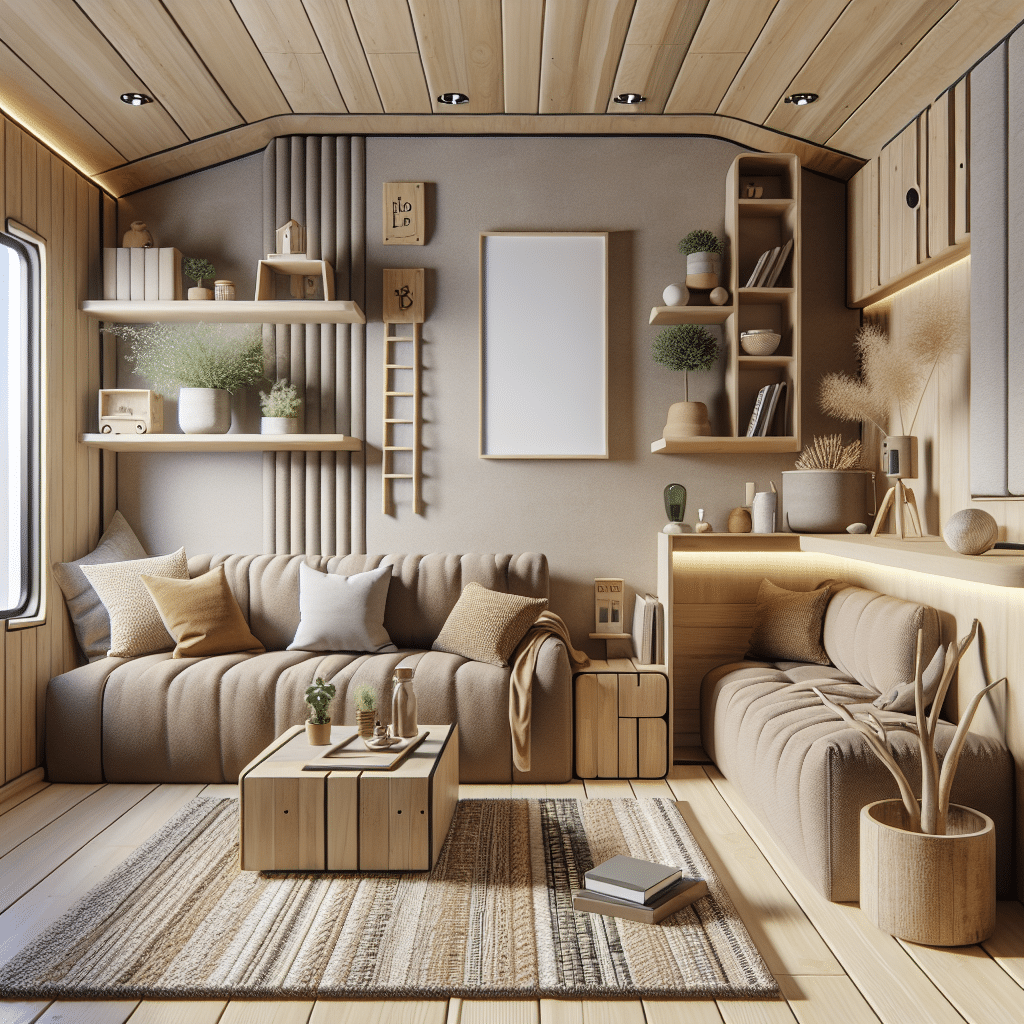The Rise of Sustainable Luxury Tiny Home Furniture
Embracing Sustainability
Sustainable luxury tiny home furniture has gained prominence as more individuals seek to marry comfort with environmental consciousness. This trend reflects a broader cultural shift towards minimalism, eco-friendliness, and a desire for personalized living spaces, allowing homeowners to embrace a lifestyle that values quality, sustainability, and style.
Key Trends Shaping Sustainable Luxury Tiny Home Furniture
- Use of Reclaimed Materials
Reclaimed wood and recycled metals are becoming staples in the creation of luxury tiny home furniture. Not only do these materials reduce the need for new resources, but they also lend a unique character to each piece. Designers are increasingly sourcing timbers from old barns, ships, and even urban settings. This reclamation process fosters a connection to the past while ensuring sustainability.
- Local Sourcing and Craftsmanship
The trend of sourcing materials locally supports local economies and minimizes transportation’s carbon footprint. Artisans who specialize in tiny home furniture increasingly utilize region-specific materials, ensuring that designs are not only eco-friendly but also culturally resonant. The craftsmanship that comes with such sourcing often showcases traditional techniques, lending an unparalleled quality to the final product.
- Modular and Multi-Functional Designs
The trend towards modular furniture aligns perfectly with the concept of tiny living. Furniture that is multi-functional, such as sofa beds, expandable dining tables, or storage ottomans, maximizes space while providing luxury and aesthetic appeal. This adaptability allows homeowners to customize their living experience for various occasions without sacrificing style or quality.
- Biophilic Design Elements
Biophilic design focuses on bringing nature indoors, which is particularly compelling in tiny homes where space can feel confined. Furniture that incorporates natural elements—think live-edge tables, organic shapes, and plant integration—can create a serene, inviting atmosphere. Options like furniture with integrated planters or natural finishes can blur the line between indoor comfort and outdoor beauty.
- Sustainable Upholstery Materials
The push for eco-friendly upholstery is reshaping the furniture industry. High-end tiny home furniture employs sustainable fabrics made from organic cotton, hemp, and even recycled plastics. Innovations in textiles have led to options that are not only luxurious but also durable and easy to maintain. Consumers are increasingly looking for materials that are free from harmful chemicals, ensuring a healthier home environment.
- Minimalist Aesthetic
The minimalist design philosophy complements the tiny home movement perfectly. Luxury furniture is moving towards simplicity, with sleek lines, neutral color palettes, and understated elegance. This aesthetic approach helps create an open and airy feel, essential in smaller living spaces, proving that sustainability can coincide with high-end sophistication.
- Smart Technology Integration
Integrating smart technology into luxury tiny home furniture is on the rise, enhancing convenience without taking up additional space. Built-in charging ports, voice-controlled lighting, and climate-control systems that work with smart home devices are becoming increasingly common, merging sustainability with high-tech solutions to enhance the living experience.
- Durability and Quality Over Quantity
As homeowners prioritize quality over quantity, manufacturers are emphasizing durable, long-lasting furniture designed to withstand the wear and tear of daily living. This focus on longevity aligns with sustainable practices, as consumers realize that investing in high-quality pieces ultimately reduces waste and teaches more responsible purchasing behavior.
- Customized and Personalized Options
Bespoke furniture solutions allow tiny home occupants to tailor pieces to their specific needs while maintaining a luxury appeal. This customization can range from selecting the material and color to creating unique designs that reflect one’s personality. Tailored furniture not only enhances space efficiency but also allows for greater emotional engagement with one’s home.
- Circular Economy Principles
The concept of a circular economy—where resources are reused, refurbished, and recycled—is beginning to influence furniture design more profoundly. Several brands are adopting take-back programs, allowing customers to return old furniture for refurbishment. This not only encourages responsible consumption but also extends the lifecycle of furniture, supporting a sustainable future.
Popular Brands Leading the Charge
Some innovative brands are setting industry benchmarks in the sustainable luxury tiny home furniture space. Brands like Loll Designs, known for their outdoor furniture made from recycled plastic, and Bamboo Home, which emphasizes bamboo’s sustainability, are examples of how companies are pushing the envelope. Meanwhile, Resource Furniture specializes in transforming small spaces with its multifunctional pieces, demonstrating how luxury can coexist with practicality.
Conclusion of Trends
Sustainable luxury tiny home furniture reflects a growing awareness of environmental impacts while embracing aesthetic elegance and functionality. The focus on quality craftsmanship, resource efficiency, and adaptive design ensures a brighter, more sustainable future for both consumers and the planet. As this trend continues to evolve, it will reshape the way we think about and engage with our living spaces. The fusion of sustainability and luxury indicates a promising path that future generations will likely follow, transforming not just homes, but lifestyles.
